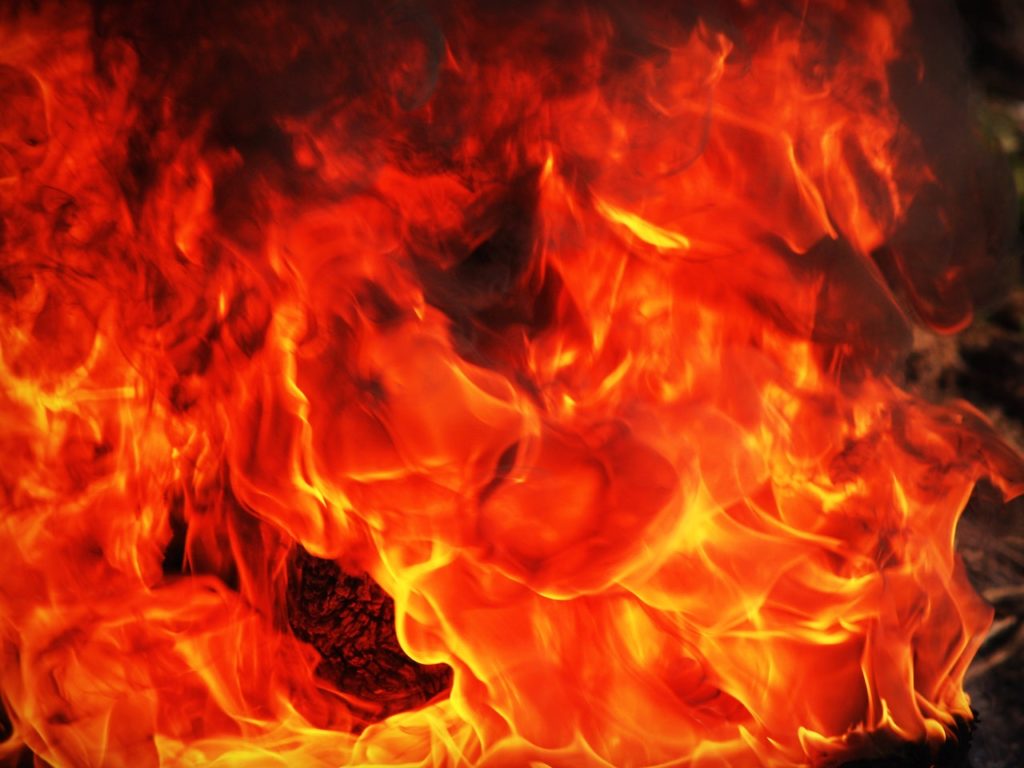
Why do some liquids burn and others don’t? Some liquids require less energy to get the chemical reaction over the activation energy barrier.
What is fire? Fire is the process of combustion and is a chemical reaction. Fire needs three things to happen: a fuel source, heat, and oxygen. If you remove one of these, the fire will die out. This is why fire extinguishers work. To start a fire, heat has to be applied to the fuel in the presence of oxygen. As more and more heat is added, the molecules in the fuel start to move faster and faster until they become a gas and are released from the fuel. The molecules in the gas have so much energy from the heat that they break apart. This is called the combustion point. When they break apart, parts of the molecules connect to the oxygen in the air and create a new molecule. This process releases heat which sustains the fire. The fire will keep burning until the fuel or the oxygen run out.
So, why do some liquids burn and others don’t? It depends on the types of molecules inside the liquid and how much energy is required for them to break apart. However, we have to remember that liquids don’t burn. The gas that the liquid produces is what burns.
Let’s look at what happens to a liquid when it burns. The liquid is heated up until the molecules pick up enough kinetic energy to become a vapor. A vapor is a combination of molecules that are in their gas state and molecules that are still in their liquid state. Inside the liquid, as more energy is accumulated, some molecules become gases and form bubbles. These bubbles rise to the top and release the gas into the air above the liquid. As more vapor accumulates, the vapor increases in pressure. When the pressure in the vapor is the same as the atmospheric pressure, the liquid starts to boil. However, there is a point before that where the vapor builds up until there are enough molecules with enough energy for them to start breaking apart and releasing heat. This is the flash point and it changes from liquid to liquid. It is the vapor that burns and not the liquid.
There are two types of liquids that burn: flammable liquids and combustible liquids. Flammable liquids are liquids that will reach their flash point and burn at temperatures under 37℃. Combustible liquids are liquids that need additional heat to reach their flash point. The flash point depends on how much energy the liquid needs to have enough vapor to start the chemical reaction. This depends on the weight of the molecules and the strength of their bonds. Gasoline has very light molecules and weak bonds, so its flash point is -42.7˚C. Motor oil has heavier molecules and stronger bonds, so its flash point is 150˚C.
So, why don’t some liquids burn? A liquid won’t burn if the molecules in the gas won’t combine with oxygen and start a chemical reaction producing heat.
Water doesn’t burn because it has already been burned. It has been through the process of combustion and the hydrogen has reacted with oxygen to make water. Oxygen molecules and hydrogen molecules are attracted to each other so strongly that it requires a lot of energy for them to be split apart.
Carbon dioxide gas doesn’t burn for the same reason. It is already combined with oxygen, so you cannot add more oxygen to it. This is one reason why CO2 fire extinguishers are used. The CO2 I heavier than the oxygen and it sinks, pushing the oxygen molecules up, away from the gases that are burning. If the gas cannot get access to oxygen, the chemical reaction that is fire stops. CO2 is also a very cold gas, so the temperature of the fire drops.
Because some liquids are flammable, they have to be stored carefully. They have to be kept away from a heat sources and usually away from oxygen.
So, some liquids burn when they have enough energy to become a vapor and the molecules have enough energy to break apart and connect to the oxygen in the atmosphere. Other liquids don’t burn because their bonds are stronger and they are already attached to oxygen. And this is what I learned today.
https://www.sciencelearn.org.nz/resources/747-what-is-fire
https://blink.ucsd.edu/safety/research-lab/chemical/liquids/index.html
https://www.chem.fsu.edu/chemlab/chm1020c/Lecture%207/03.php
https://en.wikipedia.org/wiki/Flammable_liquid
https://www.ehs.iastate.edu/services/fire/flammables-combustibles
https://en.citizendium.org/wiki/Gasoline

[…] in a Formula One car is far superior to that of a regular car, but it still relies on gravity. The fuel needs to be at the bottom of the fuel tank for the fuel pump to suck it through the fuel line. If […]